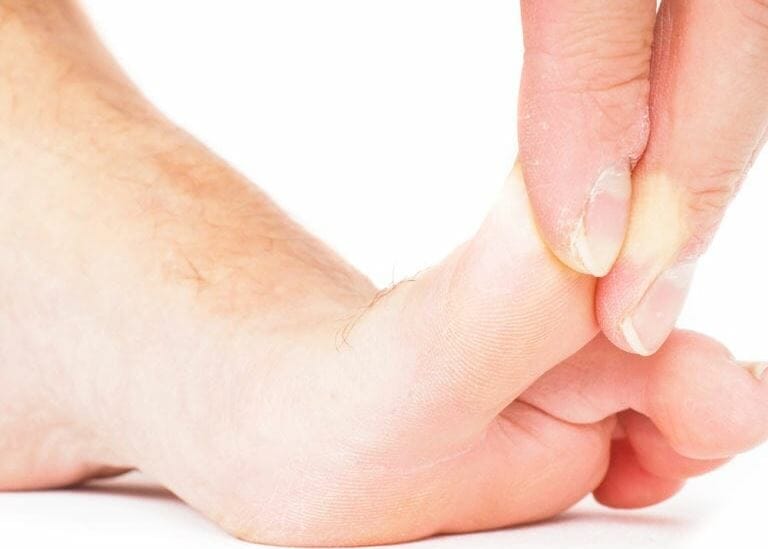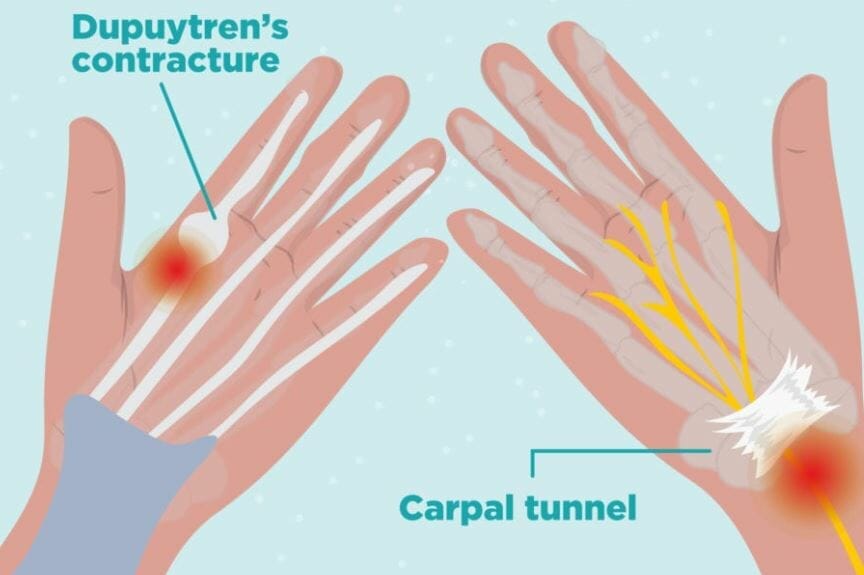
Tips on How to Prevent Arthritis in the Fingers – Stay Fit

If you’ve ever experienced the pain and stiffness associated with arthritis, you’ll know how debilitating it can be. While arthritis can affect various parts of the body, it can be particularly troublesome in the fingers. By taking preventive measures, you can reduce the risk of developing arthritis in your fingers and protect your finger joints.
In this section, we’ll share expert-recommended tips and techniques on how to prevent arthritis in the fingers. From lifestyle changes to ergonomic practices and exercises, you’ll discover effective ways to protect your finger joints and maintain agility.
Key Takeaways
- Arthritis in the fingers can be prevented through various techniques and lifestyle changes.
- Maintaining a healthy weight, regular exercise, a balanced diet, and stress management techniques are essential for preventing finger arthritis.
- Ergonomic practices such as proper hand and finger positioning and the use of assistive devices can protect finger joints.
- Exercises targeting finger strength, flexibility, and range of motion can promote healthy finger joints and reduce the risk of arthritis.
- By taking preventive measures, you can protect your finger joints, stay agile, and live a pain-free life.
Understanding Arthritis in the Fingers

Arthritis in the fingers is a common condition that affects people of all ages. It occurs when the cartilage in the finger joints wears down over time, causing pain, stiffness, and swelling.
There are many different types of arthritis that can affect the fingers, including osteoarthritis, rheumatoid arthritis, and psoriatic arthritis. Osteoarthritis is the most common type and is caused by wear and tear on the joints over time. Rheumatoid arthritis is an autoimmune disease that causes inflammation in the joints. Psoriatic arthritis is a type of arthritis that affects people with psoriasis, a skin condition.
The symptoms of finger arthritis include pain, stiffness, swelling, and a decreased range of motion. The condition can also cause deformities in the fingers, such as a bent or crooked appearance.
There are several risk factors associated with finger arthritis, including genetics, age, gender, and previous injuries to the hands and fingers. People who perform repetitive tasks with their hands or who have jobs that require a lot of typing or gripping may also be at higher risk for developing finger arthritis.
If you are experiencing symptoms of finger arthritis, it is important to see a doctor for a proper diagnosis and treatment plan. Treatment options may include medications, physical therapy, and surgery in more severe cases.
Lifestyle Changes to Prevent Finger Arthritis
If you want to prevent finger arthritis, it’s essential to make lifestyle changes that support joint health. Here are some arthritis prevention tips:
- Maintain a Healthy Weight: Being overweight places extra stress on your joints, leading to wear and tear. The more you weigh, the greater your risk of developing arthritis. Keep your weight within a healthy range to reduce the pressure on your finger joints.
- Exercise Regularly: Engaging in regular physical activity can help keep your joints flexible, reduce stiffness, and maintain a healthy weight. Incorporate exercises that promote hand and finger flexibility, such as yoga and tai chi, to keep your finger joints agile.
- Eat a Balanced Diet: Consume a diet rich in anti-inflammatory foods such as fruits, vegetables, whole grains, lean protein, and healthy fats. Avoid foods that promote inflammation, such as processed foods, sugary drinks, and fried foods.
- Manage Stress: Chronic stress can lead to inflammation in the body, which can trigger arthritis. Practice stress management techniques, such as deep breathing, meditation, or yoga, to keep stress levels in check.
Ergonomic Practices to Prevent Finger Arthritis
In addition to making lifestyle changes, incorporating ergonomic practices into your daily routine can help prevent finger arthritis. Here’s what you can do:
- Proper Hand And Finger Positioning: Maintain a neutral position of your hands and fingers while typing, texting, or performing manual tasks. Don’t overextend or hyperextend your fingers or thumb, and keep your joints in a natural position.
- Use Assistive Devices: Consider using assistive devices, such as a grip strengthener, to reduce the strain on your finger joints.
- Reduce Repetitive Strain: Take frequent breaks if you engage in activities that require repetitive finger movements, such as typing or playing an instrument. Stretch your fingers and rest them periodically to avoid overuse injuries.
Ergonomic Practices for Finger Joint Protection
Implementing ergonomic practices in your daily life can significantly reduce the strain on your finger joints, thus preventing arthritis. Here are some expert-recommended tips:
- Proper hand and finger positioning: Ensure that your hands and fingers are in a neutral position while typing, writing, or using handheld devices to reduce stress on the finger joints.
- Use of assistive devices: Consider using specialized tools like a larger grip pen or a keyboard with a built-in wrist support to reduce the strain on your finger joints.
- Reduce repetitive strain: Take regular breaks and switch up your tasks to avoid prolonged strain on the fingers. If possible, delegate tasks that require repetitive finger movements.
By incorporating ergonomic practices into your routine, you can protect your finger joints from unnecessary strain and prevent the progression of arthritis.
Exercises and Physical Therapy for Finger Arthritis Prevention
Regular exercise and physical therapy can be effective in preventing and managing finger arthritis. Here are some exercises and techniques that you can incorporate into your routine:
Finger Stretching
Simple finger stretches can help maintain flexibility and prevent stiffness. Here are some exercises that you can do:
- Make a fist and then extend your fingers as widely as possible before curling them back into a fist.
- Place your hand palm-down on a flat surface and lift each finger, one at a time, off the surface and then bring it back down.
- Gently pull back on each finger individually, using your other hand, until you feel a stretch in your palm or wrist.
Hand Grip Strengthening
Strengthening hand grip muscles can help improve finger dexterity and reduce the risk of arthritis. Here are some exercises that you can do:
- Squeeze a soft foam ball or stress ball for a few seconds and then release.
- Pinch and hold a small object, such as a coin, between your thumb and fingers.
- Wrap a rubber band around your fingers and open and close your hand to stretch the band.
Therapy Techniques
Physical therapy can also provide additional support in the prevention of finger arthritis. Here are some common techniques:
- Manual therapy, which involves hands-on techniques to stretch and mobilize fingers.
- Splinting, which can help protect and support finger joints.
- Heat and cold therapy, which can help reduce inflammation and ease pain in the fingers.
By incorporating these exercises and therapies into your routine, you can promote healthy finger joints and reduce the risk of arthritis. Consult with your healthcare provider or a physical therapist to design a safe and effective exercise program for your specific needs.
Conclusion

Preventing arthritis in the fingers may seem daunting, but by implementing the tips and techniques discussed in this article, you can effectively protect your finger joints and maintain agility. Remember to maintain a healthy weight, exercise regularly, follow a balanced diet, practice stress management techniques, and incorporate ergonomic practices into your daily life. Additionally, consider performing exercises and seeking professional guidance through physical therapy. By taking these preventive measures, you can reduce the risk of developing arthritis in your fingers and live a pain-free life.
Thank you for reading arthritistreatmentlab.com. For more comprehensive information and resources on arthritis prevention and treatment, please visit our website.
FAQ
Q: How can I prevent arthritis in my fingers?
A: To prevent arthritis in your fingers, you can follow these tips and techniques:
– Maintain a healthy weight to reduce stress on your finger joints.
– Engage in regular exercise routines that promote finger strength and flexibility.
– Adopt a balanced diet that includes foods rich in anti-inflammatory properties.
– Practice stress management techniques to reduce tension in your fingers.
Q: What is arthritis in the fingers?
A: Arthritis in the fingers refers to the inflammation and stiffness of the joints in the fingers. It can cause pain, swelling, and limited mobility, making it difficult to perform everyday tasks.
Q: What are the common causes, symptoms, and risk factors of finger arthritis?
A: The common causes of finger arthritis include aging, repetitive motions, joint injuries, and genetic factors. Symptoms may include pain, swelling, stiffness, and decreased grip strength. Risk factors include family history, previous joint injuries, and certain occupations that involve repetitive finger motions.
Q: How can lifestyle changes help prevent finger arthritis?
A: Lifestyle changes can play a crucial role in preventing finger arthritis. Maintaining a healthy weight, engaging in regular exercise, following a balanced diet, and managing stress can reduce the risk of developing arthritis in your fingers.
Q: What are some ergonomic practices for protecting finger joints?
A: To protect your finger joints, you can implement ergonomic practices such as:
– Maintaining proper hand and finger positioning while performing tasks.
– Using assistive devices or tools that can reduce strain on the fingers.
– Taking breaks and stretching your fingers during repetitive activities to minimize repetitive strain.
Q: Are there specific exercises and physical therapies for preventing finger arthritis?
A: Yes, there are exercises and physical therapy techniques that can help prevent finger arthritis. Targeted exercises focusing on finger strength, flexibility, and range of motion can be beneficial. Seeking professional guidance through physical therapy sessions can also provide valuable assistance in preventing finger arthritis.


















